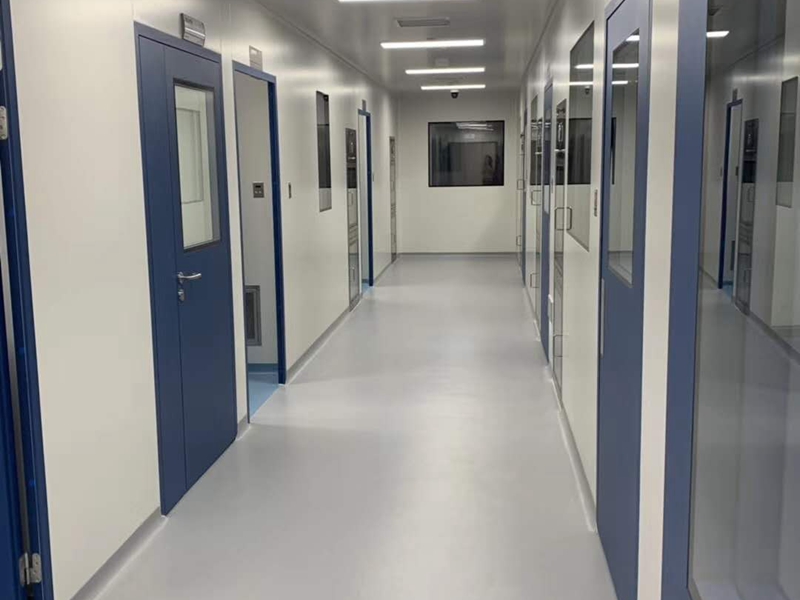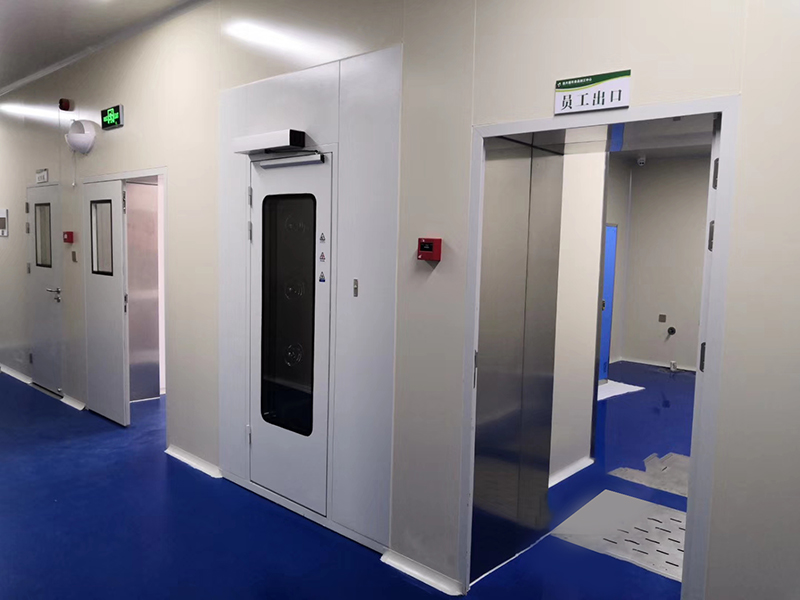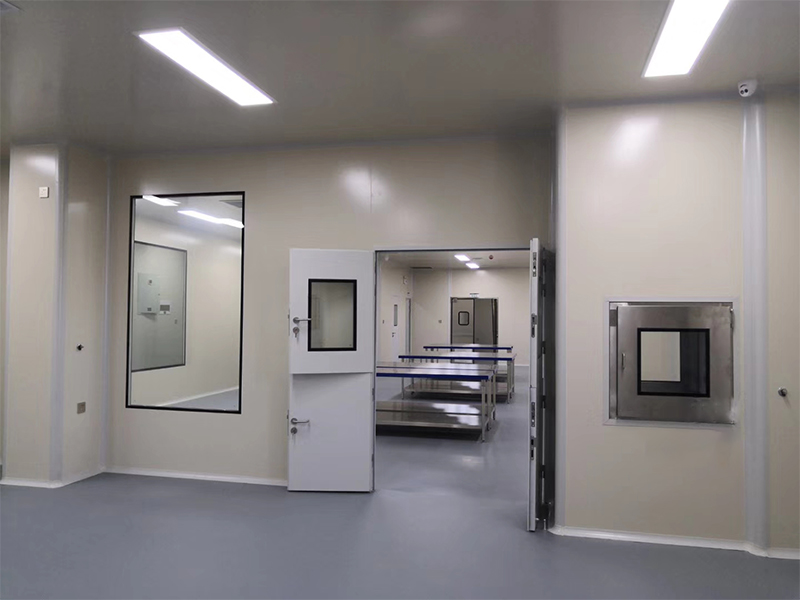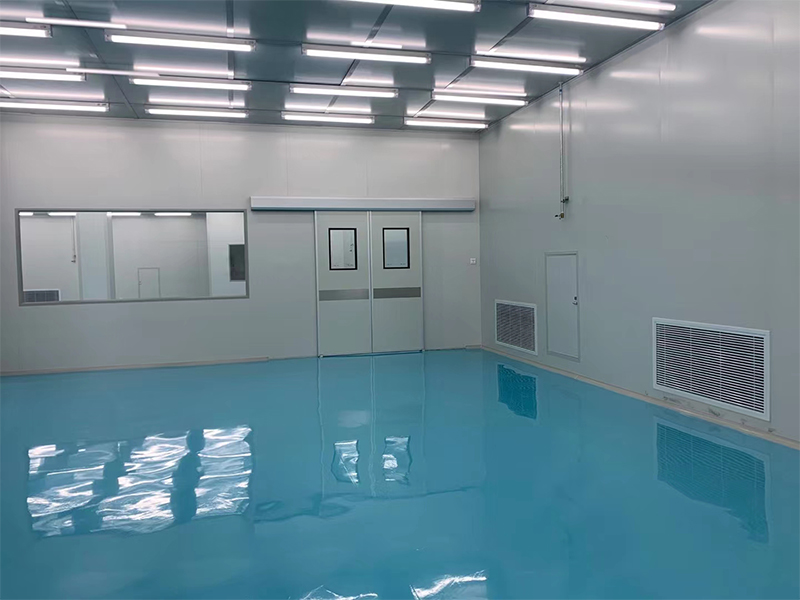

Clean room is a special closed building constructed to control particles in air in space. Generally speaking, clean room will also control environmental factors such as temperature and humidity, airflow movement patterns, and vibration and noise. So what does clean room consist of? We will help you sort out the five parts:
1. Compartment
Clean room compartment is divided into three parts, change room, class 1000 clean area and class 100 clean area. Change room and class 1000 clean area are equipped with air showers. Clean room and outdoor area are equipped with air shower. Pass box is used for items entering and exiting clean room. When people enter clean room, they must firstly pass through air shower to blow out dust carried by human body and reduce dust brought into clean room by personnel. Pass box blows dust from the items to achieve the effect of dust removal.
2. Air system flow chart
The system uses a new air conditioner + FFU system:
(1). Fresh air conditioning box structure
(2).FFU fan filter unit
The filter in class 1000 clean room uses HEPA, with a filtration efficiency of 99.997%, and the filter in class 100 clean room uses ULPA, with a filtration efficiency of 99.9995%.
3. Water system flow chart
The water system is divided into primary side and secondary side.
The water temperature on primary side is 7-12℃, which is supplied to the air-conditioning box and fan coil unit, and the water temperature on the secondary side is 12-17℃, which is supplied to dry coil system. The water on primary side and secondary side are two different circuits, connected by a plate heat exchanger.
Plate heat exchanger principle
Dry coil: A non-condensing coil. Since the temperature in the purification workshop is 22℃ and its dew point temperature is about 12℃, 7℃ water cannot directly enter clean room. Therefore, water temperature entering the dry coil is between 12-14℃.
4. Control system (DDC) temperature: dry coil system control
Humidity: The air conditioninger regulates water inlet volume of the coil of the air conditioner by controlling the opening of the three-way valve through the sensed signal.
Positive pressure: air conditioner adjustment, according to the signal of static pressure sensing, automatically adjusts the frequency of the air conditioner motor inverter, thereby adjusting the amount of fresh air entering clean room.
5. Other systems
Not only the air conditioning system, clean room system also includes vacuum, air pressure, nitrogen, pure water, waste water, carbon dioxide system, process exhaust system, and testing standards:
(1). Air flow velocity and uniformity testing. This testing is the prerequisite for other testing effect of clean room. The purpose of this testing is to clarify the average air flow and uniformity of the unidirectional flow work area in clean room.
(2). Air volume detection of the system or room.
(3). Detection of indoor cleanliness. The detection of cleanliness is to determine the level of air cleanliness that can be achieved in clean room, and a particle counter can be used to detect it.
(4). Detection of self-cleaning time. By determining the self-cleaning time, the ability to restore the original cleanliness of the clean room when contamination occurs inside clean room can be ascertained.
(5). Air flow pattern detection.
(6). Noise detection.
(7).Detection of illumination. The purpose of illumination testing is to determine the illumination level and illumination uniformity of the clean room.
(8).Vibration detection. The purpose of vibration detection is to determine the vibration amplitude of each display in clean room.
(9). Detection of temperature and humidity. The purpose of temperature and humidity detection is the ability to adjust temperature and humidity within certain limits. Its content includes detecting the supply air temperature of clean room, detecting the air temperature at representative measuring points, detecting the air temperature at the center point of clean room, detecting air temperature at sensitive components, detecting the relative temperature of indoor air, and detecting the return air temperature.
(10). Detection of total air volume and fresh air volume.


Post time: Jan-24-2024

